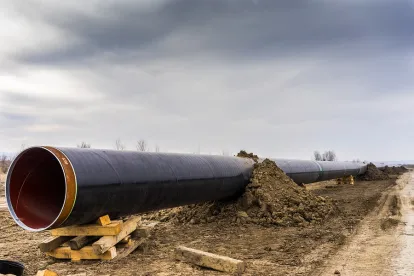In August, the U.S. Court of Appeals for the D.C. Circuit issued opinions in two appeals filed by the Sierra Club that address an agency’s obligation under the National Environmental Policy Act (NEPA) to consider the indirect environmental effects upstream or downstream of a proposed Federal action. In the first case, Sierra Club v. U. S. Department of Energy, No. 15-1489 (D.C. Cir. Aug. 15, 2017) (Sierra Club (FLNG)), the Court held in a unanimous 3-0 opinion that in approving liquefied natural gas (LNG) exports, the Department of Energy (DOE) was not required to quantify the indirect effects of upstream “export-induced” gas production or the effect on downstream emissions resulting from changes in fuel sources. In Sierra Club v. Federal Energy Regulatory Commission, No. 16-1329 (D.C. Cir. Aug. 22, 2017) (Sierra Club (Sabal Trail)), the Court held in a 2-1 decision that FERC was required to quantify the downstream emissions created by power plants to be served by a proposed pipeline.
Sierra Club (FLNG)
In Sierra Club (FLNG), the Court found that DOE had sufficiently examined the indirect environmental effects of approving LNG exports on both induced gas production and downstream consumption. Specifically, the Court agreed with DOE’s determination that the level of increased domestic gas production that might be caused by LNG exports was not reasonably foreseeable, and thus was not causally related to DOE’s approval of the exports. The Court noted several difficulties in attempting to predict the incremental quantity of natural gas that might be produced in response to an incremental increase in LNG exports from the Freeport LNG export terminal, as well as the difficulty in projecting where such production might occur. As for downstream emissions, the Court rejected the Sierra Club’s contention that DOE should have considered the potential for LNG to compete with renewables, finding that attempting to model the effect that LNG exports would have on net greenhouse gases would require an analysis of all energy markets in LNG-importing nations, and would be speculative.
Sierra Club (Sabal Trail)
In Sierra Club (Sabal Trail), the majority of the three-judge panel found that FERC’s analysis of the downstream emissions of power plants to be served by a proposed pipeline project was insufficient. Of note, the majority distinguished the Supreme Court’s decision in Department of Transportation v. Public Citizen, 541 U.S. 752 (2004), which held than an agency need not consider indirect environmental effects that an agency has no legal authority to prevent. In so doing, the majority distinguished three cases decided last year in which the D.C. Circuit applied Public Citizen to hold that FERC has no obligation under NEPA to consider the environmental effects of natural gas exports from LNG export terminals because the DOE, not FERC, regulates such exports (the LNG Export Cases).1
The majority opinion appeared to distinguish the LNG Export Cases based on a finding that FERC could not have refused to approve export facilities under Section 3 of the Natural Gas Act due to downstream environmental impacts because it was acting under a narrow delegation of authority from DOE. Thus, because FERC could not have denied a Section 3 license for export facilities based on the environmental impacts of the exports that required DOE approval, FERC was not required to consider those impacts under Public Citizen. In contrast, the majority in Sierra Club (Sabal Trail) held that Section 7 of the NGA broadly requires FERC to consider the “public convenience and necessity” when evaluating pipeline projects and in fact FERC’s policy is to balance the public benefits of a project against its adverse impacts, including adverse environmental impacts. Thus, in contrast to the LNG Export Cases where the Court found FERC was prohibited from denying a Section 3 license for export facilities based on the indirect environmental impacts of the anticipated use of the exported gas, the Court reasoned that FERC under Section 7 could deny a pipeline certificate under a broader public interest balancing test.
The dissent in Sierra Club (Sabal Trail) contended, however, that the majority’s distinction of Public Citizen is unpersuasive. Just as DOE must approve the export of natural gas, the Florida Power Plant Siting Board must approve the construction and operation of power plants in Florida. If the required DOE approval of exports breaks the causal relationship needed to obligate FERC to quantify the downstream impacts of exports, so too should the Florida Siting Board’s required approval of power plants. Moreover, FERC’s authority to approve or deny a license for LNG export facilities under Section 3 is also based on a public interest analysis and arguably is as broad as its authority to issue or deny certificates under Section 7.2
Impact of Sierra Club (Sabal Trail) on Pipeline Projects
Assuming Sierra Club (Sabal Trail) is not overturned en banc or on appeal to the U.S. Supreme Court, this decision is likely to raise issues as to the scope of the EIS that FERC must issue for each new natural gas pipeline project. By finding that Public Citizen did not eliminate FERC’s obligation to consider and quantify downstream impacts stemming from the end use of gas in facilities that were subject to another agency’s approval, it would appear that the “break the causation chain” rationale of Public Citizen will not allow FERC to avoid quantification of indirect effects of proposed pipelines.
Ironically, however, FERC never relied on this rationale in any of these cases. In a prior related Sierra Club appeal decided last year, the D.C. Circuit, sua sponte, raised Public Citizen as a justification for FERC’s refusal to examine the alleged indirect effect that approving an export terminal would have on inducing gas production and prompting greater reliance on coal as a fuel source. In Sierra Club v. FERC, 827 F.3d 36 (D.C. Cir. 2016) (Sierra Club (Freeport)), the Court found based on Public Citizen that the intervening action of DOE in granting an export license broke the casual chain and absolved FERC of responsibility to include in its NEPA analysis considerations that it could not act on. Id. at 48. Importantly, the Court noted that FERC did not explicitly consider this rationale of Public Citizen, but concluded that it was nonetheless free to rely on this explicit Supreme Court precedent as support for FERC’s orders.3 Similarly, in its orders on Sabal Trail, FERC did not rely on this aspect of Public Citizen. Rather, in distinguishing Public Citizen, the majority in Sierra Club (Sabal Trail) was responding to an argument made by the pipeline developers based on the Court’s insertion of this rationale in Sierra Club (Freeport).
Therefore, since FERC in the recent cases in which it has addressed indirect environmental impacts has not relied on the intervening agency “break the causal chain” rationale of Public Citizen, it can be surmised that FERC will continue to avoid this rationale after Sierra Club (Sabal Trail). In this sense, the difference in views of the judges on the D.C. Circuit concerning Public Citizen’s “break the causal chain” rationale should not affect the outcome of FERC’s deliberations. What remains is the “reasonably foreseeable” test of determining whether a sufficient causal connection exists between an approved action and indirect downstream or upstream environmental impacts. As the Supreme Court stated in another part of its opinion in Public Citizen, “but-for causation is insufficient to make an agency responsible for a particular effect under NEPA and the relevant regulations. NEPA requires a ‘reasonably close causal relationship’ akin to proximate cause in tort law.”
When judged in accordance with the “reasonably foreseeable” standard, the Court’s resolution in Sierra Club (Sabal Trail) appears reasonable. In this case, all of the capacity of the proposed pipeline project was contractually committed to serve two power plants. Therefore, the precise use of the gas to be delivered by the pipeline was known, and the volume of gas to be used in the power plants could reasonably be projected based on the volumes contracted for. In many other pipeline projects, however, the end use and/or volumes flowing through the pipeline may not be reasonably foreseeable. Examples include pipelines that are intended to serve marketing companies, producers, local distribution gas requirements or LNG export terminals. The end use of the gas in these situations depends on where and to whom the gas is subsequently delivered by these customers. In other cases, the proposed pipeline’s capacity may be only partially committed under firm contracts at the time FERC performs its NEPA analysis. Here again, the ultimate end use of all of the gas that will be delivered by the pipeline may not be reasonably foreseeable.
In conclusion, notwithstanding the Court’s decision regarding Public Citizen in Sierra Club (Sabal Trail), as well as an apparent split among the judges on the D.C. Circuit on this issue, FERC will likely continue to decide the extent to which it will quantify indirect environmental impacts through the application of a “reasonably foreseeable” test. What this case is sure to change is the parties’ arguments both for and against the need for FERC to analyze indirect upstream and downstream impacts, and the need for FERC to respond to such arguments in greater detail than it has in the past.
1 Sierra Club v. FERC (Freeport), 827 F.3d 36 (D.C. Cir. 2016); Sierra Club v. FERC (Sabine Pass), 827 F.3d 59 (D.C. Cir. 2016); EarthReports, Inc. v. FERC, 828 F.3d 949 (D.C. Cir. 2016).
2 See Distrigas Corp. v. FPC, 495 F.2d 1057 (D.C. Cir. 1974) (finding that FERC’s jurisdiction under Section 3 is plenary and allows FERC to impose the equivalent of Section 7 certification requirements on export/import facilities).
3 The Court stated its reliance on a ground not found in FERC’s orders did not run afoul of SEC v. Chenery Corp., 318 U.S. 80, 87 (1943) because its reliance onPublic Citizen did not depend on a factual determination or policy judgment based on the agency’s expertise.





 />i
/>i
